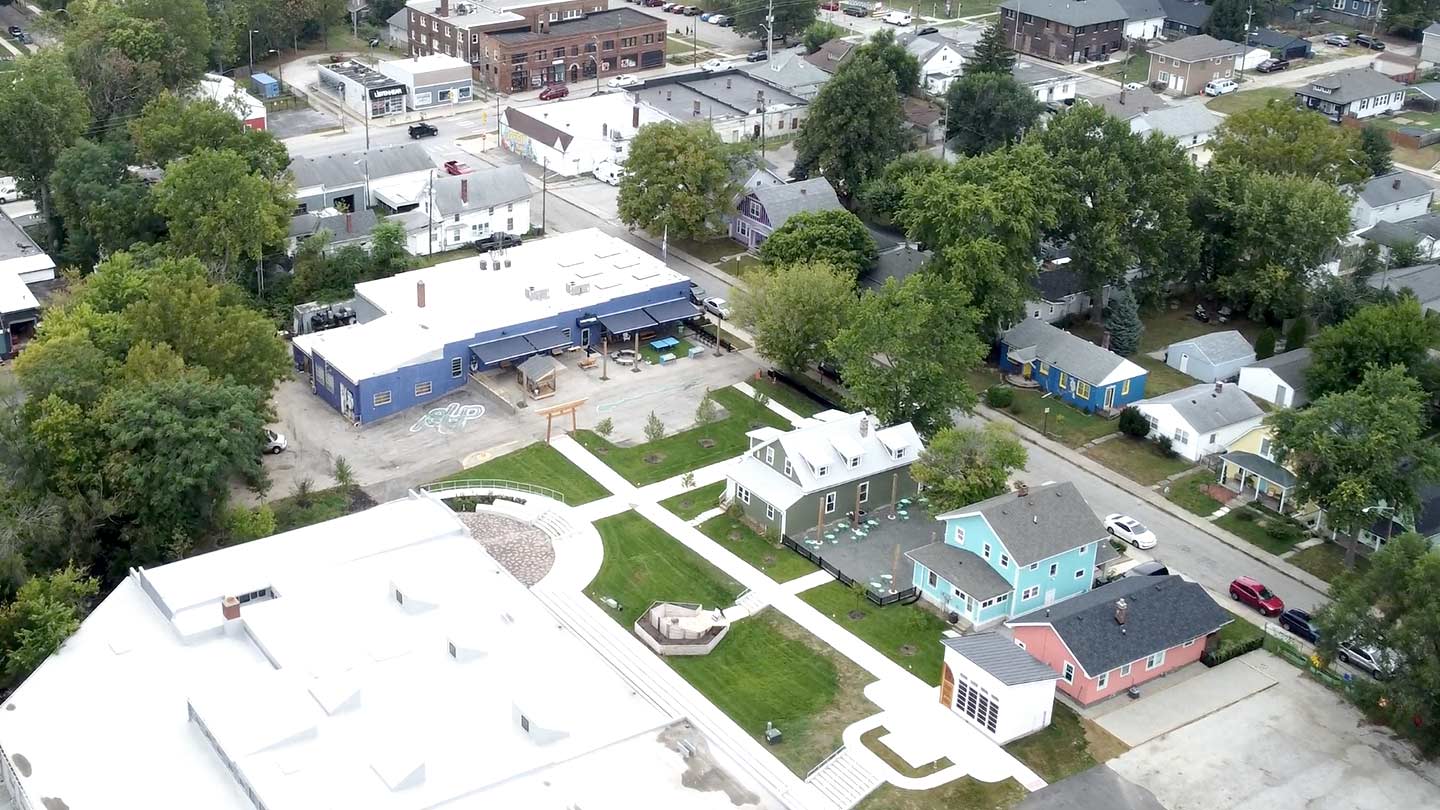
American employees, companies, real estate investors and policymakers are grappling with the future of the office. Hybrid work is altering the way employees interact, older buildings are seeing more vacancies, and environmental, social and governance (ESG) factors are influencing demand.
Riverside Investment & Development is addressing this new office landscape head on. It’s among the industry’s top innovators, developing premier office space, renovating Class B and C properties, and reimagining business districts like downtown Chicago’s LaSalle Street corridor.
And Riverside has gained valuable insights over the years.
Higher demand for Class A office buildings
“The quality of the office space matters,” said Tony Scacco, Chief Operating Officer at Riverside Investment & Development. “Having strong in-office work policies combined with high-quality office space lets employees know that the company is serious about performance and equally serious about investing in its people.”
Class A properties are doing well in comparison to their B and C counterparts. Nationwide, Class A office vacancies were 18% in Q1. The vacancy rate for Class B and C offices was 20.2% that quarter, according to Moody’s Analytics.
ESG factors are top of mind for Class A properties and often take the form of formal certification. “All new buildings address ESG,” said John O’Donnell, CEO at Riverside Investment & Development. “Our newest buildings are all certified LEED Platinum, WELL Platinum and WiredScore Platinum. Also, all have a 95%+ Walk Score.”
High-performance office properties constructed in the last 10 years also include amenities such as upscale health and wellness facilities, access to outdoor space, proptech features and integrated technology to enhance energy efficiency. But the number of Class A office buildings is limited. In Chicago, for example, most office properties were built more than a decade ago.
How did we get here?
Many markets have a combination of declining occupancy, an oversupply of older office buildings and higher interest rates. And a wave of refinancing activity is hitting the sector at the same time credit availability is tightening.
- Declining occupancy: Hybrid work has not only required building owners and occupants to reconfigure space, but it has also reduced demand for office properties. For example, if a company plans to have only half its workers in the office each day, it needs a notably smaller office space. The vacancies created have led to lower effective rents.
- Rising interest rates: “Rising interest rates have clouded office valuations and disrupted capital markets,” Scacco said. “With interest rates stabilizing meaningfully higher than the past 15-year average, rents would need to increase to avoid significant destruction of asset value.”
- More refinancing activity: Nearly $1.5 trillion of commercial real estate debt in the U.S. is due for repayment before the end of 2025. Plus, small and regional banks—commercial real estate’s biggest source of credit in 2022—have seen increased outflows, which could limit their financing capabilities.
“The higher capital cost and tight financing markets lead many owners to assume that no refinance will be available,” O’Donnell said. “This leads to a decline in leasing, as well as defaults and foreclosures, creating a circular reduction in value.”
As a result of these economic factors, owners have little incentive to invest in their buildings.
“The current situation is obviously disruptive,” Scacco said. “But it may provide a good opportunity for those who have the capital to improve those buildings with systems and amenities which approximate new buildings.”
JPMorgan Chase remains dedicated to our clients amid market uncertainty.
Riverside’s work in Chicago
The LaSalle Street corridor in Chicago’s central business district was among the hardest hit office markets.
“With significant obsolescence, limited demand and historic building protections preventing demolition, The Loop is at risk to become mostly vacant with little hope for recovery,” Scacco said. “The central business district functions best when each of its office submarkets are healthy. Degradation of one submarket has negative impacts on the others.”
The long-term impact was evident early in the pandemic. Since 2020, Riverside has worked with stakeholders to create a framework for a mixed-use neighborhood—these areas frequently see higher office demand than office-only neighborhoods. To cultivate this community, Riverside plans to:
- Reduce office inventory while increasing office demand. By partially converting office properties to market-rate and workforce rental housing, Riverside wants to encourage new office occupants to provide access to a living community near their workplace.
- Increase demand for residential properties. Bringing retail, entertainment, grocery stores and cultural events to the LaSalle Street corridor could significantly increase demand for residential properties and, subsequently, demand for office space.
“All told, we believe the reduction in office inventory and increased demand for office space in this location would firm up rents and, thus, ameliorate several problems the city faces,” O’Donnell said. “Attracting new tenants but also enhancing the real estate tax base.”
What to do with outdated office buildings
Class B and C office properties also have an important role to play in the future of the office, whether that’s through adaptive reuse or building upgrades.
Adaptive reuse of office buildings
Adaptive reuse can help revitalize older buildings. But for it to work there are a few issues to overcome.
- Suitability: “The physical characteristics of a given building—floorplate dimensions specifically—will determine to a large extent whether a building is suitable for a new use,” Scacco said. Many older office buildings built in the 1920s and ’30s—like the ones on Chicago’s LaSalle Street—lend themselves well to adaptive reuse because they have the shallower floors, usually for light wells.
- Cost: It’s expensive to renovate older buildings, and costs can be unpredictable. Often, developers face a gap between the cost required to adapt an older office asset and the revenue it can achieve in its new use. “It needs to make sense economically,” Scacco said.
- Location: Many central business districts lack the high-quality grocery stores, retail shops and entertainment options that residents demand. Any redevelopment plans should take nearby amenities and the pedestrian environment into account.
Modernization for office use
While not every Class B or C property is suitable for adaptive reuse, many buildings can be transformed into modern office spaces.
“With office properties built in the last 30 to 40 years, there may be opportunities to do value-add improvements,” O’Donnell said. “But this will require substantive basis adjustments in order to replace major systems, as opposed to cosmetic changes which don’t resolve the underlying obsolescence of an asset.”
Instead, today’s improvements may include wholesale changes, such as:
- Upgraded mechanical and automation systems that can improve ventilation and air quality
- Smart elevators that help shorten trips
- Fiber optic and cell phone signal distribution throughout the building
A flight to quality
“Net demand for office space is likely to remain lower than it was pre-pandemic,” Scacco said. “But the demand that remains is particularly interested in higher quality space to entice workers back.”
Many businesses looking to relocate are focusing on newer office buildings with better amenities, which suggests demand for high-end buildings will stay strong.
Class B and C properties are still an important part of office’s future. Converting these buildings into multifamily, mixed-use and other real estate assets can be costly—but it’s more feasible than in the past.
Proptech can help you make more informed, data-driven decisions about your property.
Updating these properties could help transform central business districts into neighborhoods where residents can live, work and play.
Interest rates play an important role in office’s future, but they’re not the only thing to consider. Find out what other economic factors you should keep in mind.
JPMorgan Chase Bank, N.A. Member FDIC. Visit jpmorgan.com/commercial-banking/legal-disclaimer for disclosures and disclaimers related to this content.







